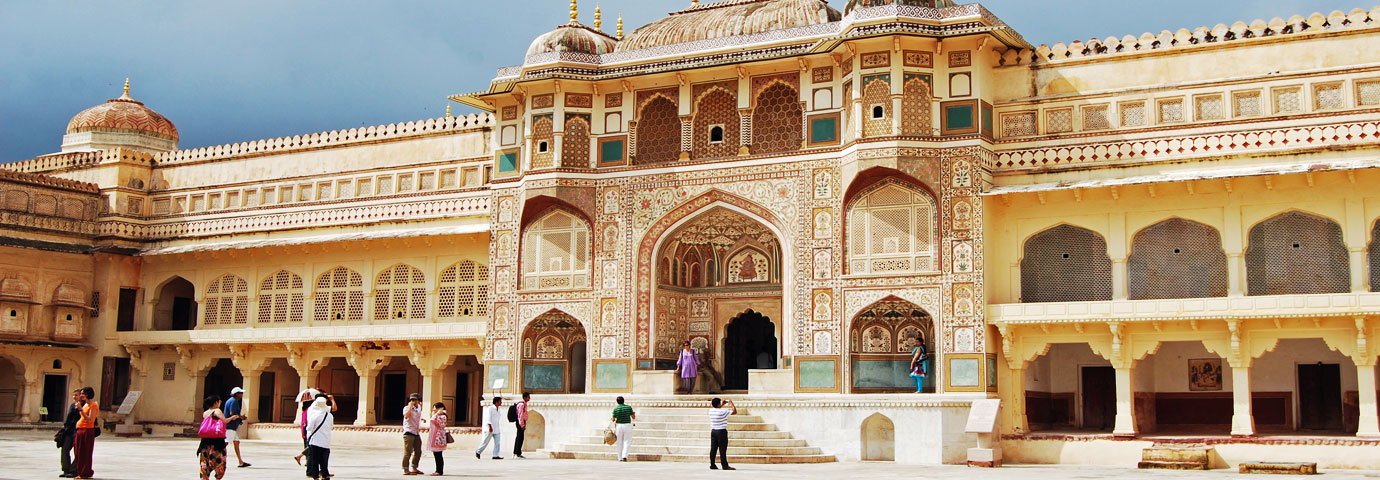
Opening Time
Entry Fees
*no additional charge for visiting City Palace Museum
Location
Best Time to visit
Placed in the middle of Aravalli ranges, Udaipur offers its visitors immense beauty of three interconnected lakes and the elevated hills. The city boasts of several attractions including the very popular, City Palace, which exhibits the rich display of artifacts of medieval period and European era. The City palace provides a spectacular view of Lake Pichola which is one of the largest and the oldest lakes in Udaipur. The complex designs made on tough grounds symbolizes the roughness and compassion of ancient rulers. The grand palace reveals a lot about the celebration and commemoration of the people and the notable strength of ordeal.
Settled on the east bank of Lake Pichola, the City Palace in Udaipur was built around 400 years back. It is regarded to be the largest royal complex in the state of Rajasthan. The palace was put up during the time when the city of Udaipur was established, by Maharana Uday Singh and his successors in 1559. The Maharanas used to live in the palace and administer their kingdom.
Legends say that year before when the Maharana Uday Singh was on a hunting trail on the hills of Udaipur, he met a hermit who was meditating on the hill top. He advised Maharana to construct a palace at that very place where he was meditating. And so, the palace complex was built here on the hill top offering an awe-inspiring view of the city.
City Palace is a masterpiece of brilliant architecture. The palace complex has many gateways, palaces, halls and a museum inside. The palace is a mélange of rich Rajasthani, Mughal, Medieval, European and Chinese styles. The palace is constructed completely of marble and granite. Formerly, the palace was the property of Mewar’s royal family and the first structure that was built inside the palace complex was the grand courtyard Rai Angan.
The white color of the palace is often compared to the Greek islands like Mykonos. One can adore the breathtaking view of the city from the upper terraces of the palace. The exquisitely designed interiors include balconies, towers and cupolas which are a blend of impressive mirror and marble work, intricate wall-paintings, silver works, decorative work and leftovers of colored glass.
There are a number of gateways that provide access to palace complex. The main entrance to the palace is through ‘Bara Pol’ or Great gate that leads to ‘Tripolia Pol’. The Tripolia Pol is a triple curved gate. There are numerous shops and stalls of antiques, book-binders, miniature painters, textile dealers on the road that are extended from this gate to the palace.
Between Bara Pol and Tripolia Pol, there are eight marble curves or Toranas put up. Also, there is a big ground in front of Toran Pol; where elephant fights were conducted in order to test their energy before taking them to battle grounds.
Tripolia gate, further takes you to a big courtyard, Manek Chowk where you get to see a large tiger-catching cage.
Getting inside the City Palace there are several gateways, Amar Vilas, Badi Mahal, Amar Vilas, Chini Chitrashala, Choti Chitrashali, Dilkhusha Mahal, Durbar Hall, Fateprakash Palace, Jagdish Mandir, Krishna Vilas, Laxmi Vilas Chowk, Manak Mahal, Mor Chowk , Rang Bhawan, Sheesh Mahal and a museum.
Amar Vilas is the topmost segment of the palace constructed in Mughal styles. It is a pleasure pavilion that has hanging gardens with fountains, towers and terraces.
The Great Palace or Badi Mahal is a garden palace. The garden has a pool which was used for Holi celebrations by royal family. Besides this, there is hall that houses paintings of 18th and 19th century, paintings of Jag Mandir, Vishnu of Jag Mandir and an elephant fight scene.
Bhim Vilas constitutes of a gallery that has an amazing collection of paintings depicting scenes from real life of Radha-Krishna.
Chini Chitrashala has Chinese and Dutch patterned tiles.
Durbar hall is one of the major sections of the palace that lies within the Fateh Prakash Palace (now a heritage hotel). The foundation stone of the hall was laid by Lord Minto, Viceroy of India in 1909. It was this place where all the important gatherings were held. Inside the hall there is a gallery which was used by royal ladies to watch Darbar happenings, impressive interior with unique chandeliers and weapons of Maharans.
Now turned into a luxury hotel in Udaipur, Fateh Prakash palace comprises of a crystal art gallery that showcases crystal chairs, tables, sofas and beds, table fountains and crockery that are worth watching. All the crystal articles were ordered by Maharaja Sajjan Singh. But later, all the items remained unopened for around 110 years, because he died before they arrived.
Jagdish Mandir is a holy shrine that is associated with Lord Jagannath, a form of Lord Vishnu. The presiding deity inside the temple is of Lord Jagannath in black stone. In front of the temple is the statue of Garuda (the bird), carrier of Lord Vishnu.
Designed in Indo-Aryan styles, the walls and tower of the temple are decorated with scenes from Lord Vishnu’s life and statues of nymphs and apsaras.
Krishna Vilas is the storehouse to remarkable paintings that represent the games, festival celebrations and other gatherings of royal family.
Laxmi Vilas Chowk is an art gallery where you can see Mewar paintings.
Rang Bhawan was the place where royal valuables were kept. There are temples of Lord Krishna, Lord Shiva and Meera Bai.
Sheesh Mahal is a palace of mirrors constructed in 1716.
The city palace museum is a part of palace complex that exhibits a monkey holding a lamp, Maharaja flaunting his moustaches and many other objects and artifacts including photographs, paintings, sculpture in silver and so on.
Subscribe Our Newsletter for get latest updates
Follow us: